










Hyundai Inster

The Hyundai Inster, an upcoming A-segment sub-compact EV, is set to redefine the entry-level electric vehicle segment in India. This review delves into its anticipated practicality, highlighting its unique design, promising electric powertrain, and advanced technology. Positioned as Hyundai's smallest EV, it aims to offer segment-leading range and versatility for urban commuters and budget-conscious EV buyers.
Hyundai Inster Variants & Prices
Filter By Fuel type & Transmission type| Variant Details | Ex. Showroom Price | |
|---|---|---|
Inster Inster New Variant Base ModelAutomatic, Electric | ₹ 12 Lakh* |
Pros & Cons of Hyundai Inster
Things We Like
- Unique and futuristic design with pixel-graphic elements.
- Segment-leading electric range (up to 370 km WLTP).
- Surprisingly spacious and versatile four-seater interior with fold-flat seats.
- Advanced infotainment system with dual 10.25-inch screens and Bluelink connectivity.
- Comprehensive ADAS suite and 7 airbags for enhanced safety.
- V2L (Vehicle-to-Load) functionality for powering external devices.
Things We Don't Like
- Strict four-seater configuration might limit appeal for some.
- Initial reports suggest potential lack of wireless Apple CarPlay/Android Auto (needs final India-spec confirmation).
- Expected to be priced at a premium compared to some other entry-level EVs.
- Final charging infrastructure compatibility and real-world range will be key.
Hyundai Inster Overview

The Hyundai Inster is an all-new A-segment sub-compact electric vehicle from Hyundai, globally unveiled and expected to launch in India by late 2026, possibly around June 2026. It is positioned as Hyundai's smallest EV and is based on the design legacy of the petrol-powered Casper, sold in Korea. The Inster aims to combine a futuristic and innovative design with a surprisingly spacious interior for its compact footprint. Its primary strengths are anticipated to be its segment-leading driving range, agile city dynamics, advanced technology features including ADAS, and the versatility offered by its interior layout. As an entry-level EV, it will face competition from other affordable electric offerings in the Indian market.
engine and performance
The Hyundai Inster will be an all-electric vehicle, offering two battery pack options in global markets, which are likely to be available in India as well. The standard battery pack is a 42 kWh unit, paired with a front-axle-mounted electric motor producing 97 PS (95 bhp) of power and 147 Nm of torque. A larger, long-range 49 kWh battery option will also be available, delivering 115 PS (113 bhp) of power and 147 Nm of torque.
The Inster is designed for agile city dynamics, with quick electric acceleration. It can go from 0 to 100 km/h in approximately 10.6 seconds and has a top speed of 150 km/h. The smaller 42 kWh battery is expected to offer a real-world range of around 300 km (WLTP), while the 49 kWh long-range battery is projected to deliver up to 370 km (WLTP) on a single charge. Charging capabilities include fast charging from 10 to 80 percent in about 30 minutes using an 85 kW DC charger. The vehicle will also support Vehicle-to-Load (V2L) functionality, allowing it to power external devices, adding to its versatility.
Ride and Handling
The ride and handling characteristics of the Hyundai Inster are expected to be well-suited for urban environments, prioritizing ease of maneuverability and a comfortable ride. Built on an extended wheelbase version of the platform shared with the Korean-market Casper, the Inster is designed to offer a mature driving feel despite its compact size.
The suspension setup is likely to be tuned for local conditions, aiming for a balance between absorbing road imperfections and maintaining composure. Reviews suggest it handles and steers neatly and lightly, responding rapidly to inputs, making it easy to navigate through congested city traffic. Its tight turning circle will further enhance urban maneuverability. While it's primarily a city car, it is expected to be stable enough for occasional highway runs, though consumption might increase at higher speeds. The availability of multiple levels of regenerative braking, controllable via steering wheel paddles, will make the driving experience more interactive and efficient in stop-and-go traffic.
interior
The interior of the Hyundai Inster is designed to maximize space and versatility within its small footprint. Despite its compact exterior dimensions, the cabin is surprisingly roomy, offering smart space-maximizing touches. It is strictly a four-seater, a deliberate choice by Hyundai to ensure excellent lounging room for the driver and three passengers, rather than a compromised middle rear seat.
Key interior features include a 10.25-inch digital instrument cluster and a 10.25-inch infotainment touchscreen, both standard. The rear seats feature a 50:50 split functionality and can slide back and forth by 16 cm, allowing for class-leading legroom or increased boot space as needed. All seats can fold flat, offering immense flexibility for cargo or even an impromptu mini campervan setup. The flat EV floor further enhances leg and foot space. While creature comforts like rear AC vents or multiple USB ports in the rear might be limited, the front cabin is expected to include a wireless charging dock, and the steering wheel will feature interactive pixel lights, similar to the IONIQ 5.
Infotainment
The infotainment system in the Hyundai Inster is a highlight, offering seamless connectivity and advanced features expected in modern EVs. It comes equipped with a 10.25-inch digital instrument cluster and a 10.25-inch center touchscreen as standard. This setup provides easy access to a wide range of car systems, driver information, infotainment, and navigation.
The system is expected to support smartphone mirroring, though initial reports suggest the lack of wireless Apple CarPlay and Android Auto might be a miss for some tech-savvy customers, depending on the final India-spec. A wireless charging dock is conveniently located in the compact center console. The Inster will also feature Bluelink Connected Car Services, offering seamless connectivity via a smartphone app or touchscreen display, with online voice recognition and a variety of features like automatic collision notification, emergency call function, live traffic and weather information, and remote control of climate and vehicle functions. Over-the-air (OTA) updates for maps and infotainment software are also expected to be available.
exterior
The exterior design of the Hyundai Inster is characterized by a bold and futuristic aesthetic, evolving from the Casper micro-SUV. It presents a robust yet compact SUV profile, making it ideal for navigating crowded city streets and tight parking spaces. The design incorporates flush, clean surfaces, strong fenders, and a high-tech, circuit board-style bumper, enhancing both its front and rear designs.
A distinctive feature is its LED daytime running light signature and pixel-graphic turn signals, tail lamps, and bumpers, giving it a unique visual identity. Customers will have options to further differentiate the car's appearance with LED projection headlamps and a two-tone exterior with a contrasting black roof. Wheel options are expected to include 15-inch steel with wheel covers, 15-inch alloy, or 17-inch alloy wheels, depending on the specification. The Inster will measure approximately 3,825 mm in length, 1,610 mm in width, and 1,575 mm in height, with a wheelbase of 2,580 mm.
safety
The Hyundai Inster is expected to offer a comprehensive suite of safety features, positioning it as a safe option in the compact EV segment. It is anticipated to achieve a four-star Euro NCAP rating, indicating a good level of overall safety performance.
The Inster will come equipped with seven standard airbags, including front, front side, side curtain, and a front center airbag, providing extensive passive protection. In terms of active safety and driver assistance, the Inster will feature Hyundai's Smart Sense Technology, which includes a comprehensive suite of Advanced Driver Assistance System (ADAS) features. These are expected to include Lane Keeping Assist (LKA), Lane Following Assist (LFA), Forward Collision-avoidance Assist (FCA) with pedestrian and cyclist detection, Smart Cruise Control with Stop & Go (SCC w/ S&G), Intelligent Speed Limit Assist (ISLA), Rear Occupant Alert, Parking Collision-Avoidance Assist Rear (PCA-R), Surround View Monitor (SVM), and Blind-Spot View Monitor (BVM). These systems are designed to enhance driver awareness, prevent collisions, and provide a more relaxed driving experience.
competition
The Hyundai Inster will enter a rapidly evolving and competitive electric vehicle market in India, particularly in the entry-level and compact EV segments. Its primary direct rival is expected to be the Tata Punch EV, which has already established itself in the market. Other potential competitors could include the MG Comet EV (though smaller), and upcoming affordable EVs from other manufacturers.
The Inster's key differentiators will be its unique Hyundai design language, a potentially segment-leading range for its size, advanced technology features, and Hyundai's strong brand presence and service network in India. While the Tata Punch EV offers a strong value proposition and a competitive range, the Inster will aim to stand out with its distinctive styling and potentially more sophisticated features and safety suite. Its success will largely depend on its final pricing and how well it resonates with Indian consumers looking for a modern, efficient, and well-equipped electric city car.
final verdict
The Hyundai Inster is poised to be a significant addition to India's burgeoning electric vehicle market. It promises a fresh design, a practical and versatile interior, and a compelling electric powertrain with a respectable range, all packaged in a compact, urban-friendly SUV. Its strong emphasis on technology and safety, including an advanced ADAS suite, positions it as a sophisticated offering in the affordable EV segment.
For urban dwellers and those seeking an economical yet feature-rich electric car, the Inster presents a very attractive proposition. Its anticipated competitive pricing, combined with Hyundai's established network and reliability, could make it a popular choice. While it will face stiff competition, particularly from the Tata Punch EV, the Inster's unique blend of style, space, and technology could carve out a strong niche for itself, making it a highly anticipated launch for Indian EV enthusiasts.
Popular Hyundai Cars

₹10.73 - 20.20 Lakh

₹7.26 - 12.46 Lakh

₹10.69 - 16.98 Lakh
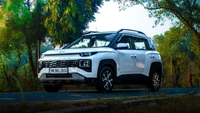
₹5.49 - 9.61 Lakh
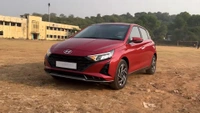
₹6.87 - 10.38 Lakh
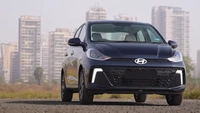
₹5.98 - 8.42 Lakh

₹14.47 - 21.10 Lakh
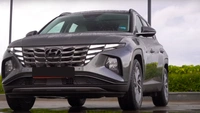
₹27.32 - 33.64 Lakh
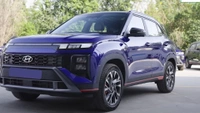
₹17.83 - 20.09 Lakh
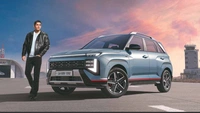
₹10.55 - 12.81 Lakh
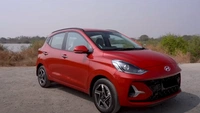
₹5.47 - 7.92 Lakh
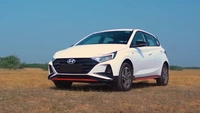
₹9.14 - 11.60 Lakh
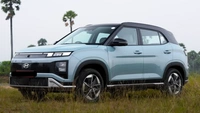
₹18.02 - 24.55 Lakh
 New Variant
New Variant₹30 Lakh
 New Variant
New Variant₹7.90 - 13.60 Lakh


















